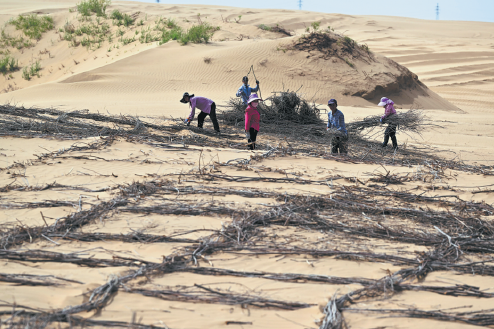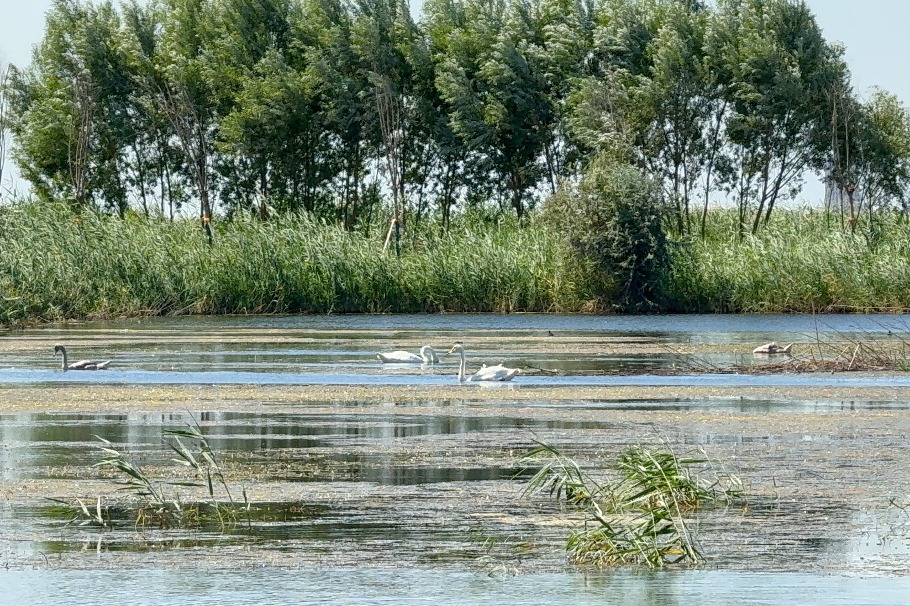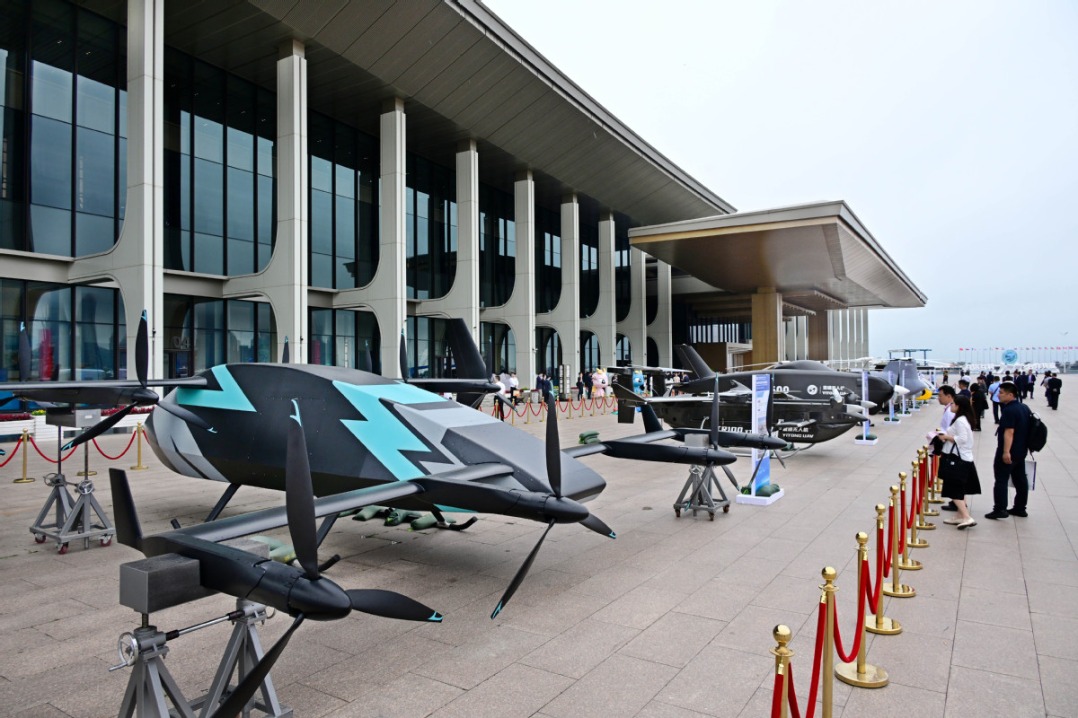Storks find new homes thanks to State Grid project
Transmission tower nests part of solution

Its extensive wetlands, including lakes, marshlands and ponds, make Gaoyou in East China's Jiangsu province an important wintering and breeding ground for the Oriental white stork, a large migratory bird under first-level State protection.
At the end of May, more than 300 Oriental white storks were counted in Gaoyou, a county-level city in Yangzhou. While more than 100 soon left for their breeding grounds in Northeast China and Russia — only returning this autumn — nearly 200 have chosen to settle in Gaoyou year-round, partly thanks to a power supplier's conservation efforts.
"Some storks found that our power transmission towers could be perfect places for them to build their homes," said Wang Wei, the leader of a volunteer bird conservation team with State Grid's Yangzhou power supply branch and a maintenance worker at its Gaoyou subbranch.
The "Bird Guardian Grid" is a public welfare project initiated by the State Grid Public Welfare Foundation in collaboration with the corporation's provincial power companies and affiliated units, he said. "It aims to protect endangered birds such as the Oriental white stork and crested ibis along the corporation's power transmission lines.
"Because of the distribution of the Oriental white storks in Gaoyou, our company has become a dedicated participant in the project. Many of my fellow workers have become ardent bird protectors."
In early June, construction workers discovered three newly hatched Oriental white stork chicks on an electricity tower in Gaoyou while preparing to install power lines on the company's Jiangteng Line.
The sight of the hungry baby birds both excited and worried Luo Peng, the manager of the line construction project, because the Jiangteng Line was an important power project being built in coordination with the construction of the Beiyangjiang High-Speed Railway, and it had to be completed on time.
He immediately contacted Wang and his team.
In order to protect the chicks and complete construction, Luo Peng, Wang and members of the volunteer team contacted local forestry experts and, after several rounds of discussion, figured out protective measures.
They first adjusted the construction sequence, making the tower with the nesting chicks the last one to be worked on, giving the young birds over 20 days to grow safely.
Then on July 11, under the guidance and supervision of local experts, Luo led his workers to complete the installation work on the tower while trying hard to minimize disturbance to the young birds' growth.
"Staying nearly 60 meters above the ground, we completed the installation under the young birds' eyes," Luo said. "They continued their growth on the tower after the installation. It was truly a comforting sight."
Wang said all the chicks successfully later left the nest. To encourage Oriental white storks to settle on safer locations on electricity towers, Wang and his teammates also built 10 artificial nests on some towers in Gaoyou last year.
They later started searching for new locations for the artificial nests, and found the marshland around Gaoyou Lake, with fewer human disturbances, ample food and a considerable distance to transmission lines, to be a better site. They decided to build four upgraded artificial nesting stands around the wetland.
The stands are steel structures built like transmission towers, and consist of a steel pipe base and a cylindrical steel frame with a diameter of 1.2 meters.
On the morning of Oct 8, construction of the four artificial stands was completed, ready for storks to "check-in".
"We've already found some tree branches and grass on one of the stands," Wang said. "It's a positive sign that some birds are building a nest on it."
Using surveillance cameras, Wang and his colleagues can take care of the birds online.
"Once storks settle into their new home, we will provide them with round-the-clock protection," Wang said.
Zhu Jie, a young employee of the Yangzhou branch, has conducted research with the bird conservation team to try to understand the living habits of the white storks and find ways to decrease disturbances caused by storks nesting to transmission towers.
Initially, they used bird-prevention measures such as bird spikes to prevent the storks from nesting on the towers. However, such methods did not stop some of them from nesting on the towers and, to some extent, increased the risks of injuring the birds.
Zhu, Wang and their colleagues sought help from ornithologists and organized meetings to find solutions.
Through technological innovation, they designed protective shields using a new type of epoxy resin insulation material. After they are installed on towers, the shields can prevent stork activities from affecting the power lines, Zhu said.
"This patented technology has been widely applied in the whole company," he said.
With conservation efforts from all sides, the global population of the Oriental white stork has recovered from barely 3,000 before 2000 to about 9,000 at present.
"We have developed innovative solutions enabling transmission lines and birds to coexist in harmony," Wang said. "We hope our project will win more support from the public to protect transmission lines and the storks."


Today's Top News
- Exemplary vision drives development
- Lasting bond honors Flying Tigers legacy
- Monetary easing to persist in near term
- Trump, Zelensky, European leaders hold multilateral talks
- China firmly reaffirms sovereignty over Taiwan
- A-share market surges past 100 trillion yuan milestone






























